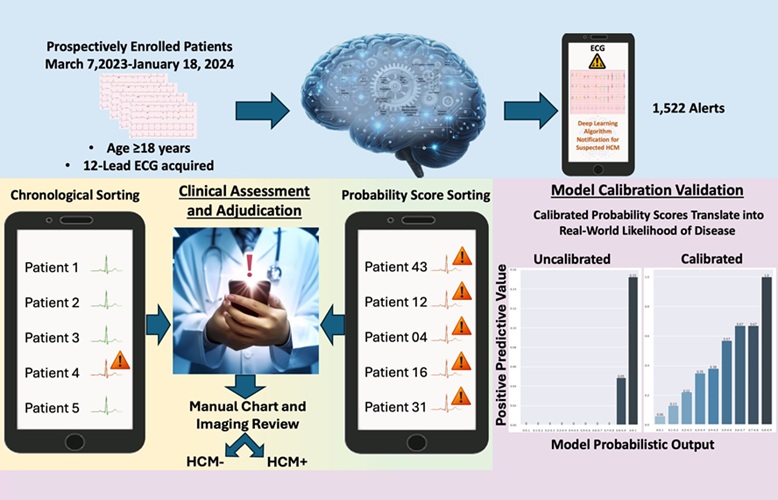Percutaneous Approach Makes Laparoscopy Less Invasive
|
By HospiMedica International staff writers Posted on 07 Sep 2016 |

Image: The second-generation Percuvance percutaneous surgical system (Photo courtesy of Teleflex).
A novel surgical system allows surgeons to perform laparoscopic procedures using a smaller incision site than traditional laparoscopic surgery devices.
The second-generation Percuvance percutaneous surgical system offers a wide variety of instrument configurations, with reusable handles and seven disposable 5 mm interchangeable tool tips. These include graspers, scissors, dissector, electrocautery tools, and the Weck Hem-o-lok polymer ligation clip applier. The system also offers a less invasive percutaneous insertion method into the patient, without the use of an invasive trocar. It also enables surgeons to eliminate one or more additional trocars from their laparoscopic procedures.
The second-generation system is even less invasive than the first-generation system; while only 2.9 mm in diameter, it still delivers the performance and versatility of 5 mm laparoscopic devices in common and advanced general laparoscopic procedures, including cholecystectomy, upper gastrointestinal, gastric, bariatric, colorectal, and hernia interventions. The system is complemented by the MiniLap percutaneous surgical system, an integrated, disposable 2.3 mm device that like the Percuvance percutaneous surgical system, does not require a trocar.
Additional benefits of the system include a short operator learning curve, few adjustments to the surgeons’ current techniques, and the cost savings associated with capital, service, and fully disposable technologies. The second-generation Percuvance and MiniLap percutaneous surgical system are products of Teleflex (Limerick, PA, USA), and have been approved by the U.S. Food and Drug Administration (FDA).
“Our second-generation Percuvance system represents a significant advancement in the ongoing and perpetual evolution of minimally invasive surgery, and is demonstrative of Teleflex’s unwavering commitment to innovation,” said John Tushar, president and general manager of Teleflex Surgical. “We are encouraged by surgeons’ enthusiastic response to our percutaneous surgical devices and are optimistic the new Percuvance System will become a new standard of care in laparoscopic surgery.”
“No matter what the surgery, patients generally prefer and are more satisfied with smaller incisions,” said Chan Park, MD, of the Duke University (Durham, NC, USA) Center for Metabolic and Weight Loss Surgery. “The development of new options for less invasive surgery that may also minimize discomfort for patients always represents a step forward in clinical care.”
Related Links:
Teleflex
Duke University
The second-generation Percuvance percutaneous surgical system offers a wide variety of instrument configurations, with reusable handles and seven disposable 5 mm interchangeable tool tips. These include graspers, scissors, dissector, electrocautery tools, and the Weck Hem-o-lok polymer ligation clip applier. The system also offers a less invasive percutaneous insertion method into the patient, without the use of an invasive trocar. It also enables surgeons to eliminate one or more additional trocars from their laparoscopic procedures.
The second-generation system is even less invasive than the first-generation system; while only 2.9 mm in diameter, it still delivers the performance and versatility of 5 mm laparoscopic devices in common and advanced general laparoscopic procedures, including cholecystectomy, upper gastrointestinal, gastric, bariatric, colorectal, and hernia interventions. The system is complemented by the MiniLap percutaneous surgical system, an integrated, disposable 2.3 mm device that like the Percuvance percutaneous surgical system, does not require a trocar.
Additional benefits of the system include a short operator learning curve, few adjustments to the surgeons’ current techniques, and the cost savings associated with capital, service, and fully disposable technologies. The second-generation Percuvance and MiniLap percutaneous surgical system are products of Teleflex (Limerick, PA, USA), and have been approved by the U.S. Food and Drug Administration (FDA).
“Our second-generation Percuvance system represents a significant advancement in the ongoing and perpetual evolution of minimally invasive surgery, and is demonstrative of Teleflex’s unwavering commitment to innovation,” said John Tushar, president and general manager of Teleflex Surgical. “We are encouraged by surgeons’ enthusiastic response to our percutaneous surgical devices and are optimistic the new Percuvance System will become a new standard of care in laparoscopic surgery.”
“No matter what the surgery, patients generally prefer and are more satisfied with smaller incisions,” said Chan Park, MD, of the Duke University (Durham, NC, USA) Center for Metabolic and Weight Loss Surgery. “The development of new options for less invasive surgery that may also minimize discomfort for patients always represents a step forward in clinical care.”
Related Links:
Teleflex
Duke University
Latest Surgical Techniques News
- DNA Origami Improves Imaging of Dense Pancreatic Tissue for Cancer Detection and Treatment
- Pioneering Sutureless Coronary Bypass Technology to Eliminate Open-Chest Procedures
- Intravascular Imaging for Guiding Stent Implantation Ensures Safer Stenting Procedures
- World's First AI Surgical Guidance Platform Allows Surgeons to Measure Success in Real-Time
- AI-Generated Synthetic Scarred Hearts Aid Atrial Fibrillation Treatment
- New Class of Bioadhesives to Connect Human Tissues to Long-Term Medical Implants
- New Transcatheter Valve Found Safe and Effective for Treating Aortic Regurgitation
- Minimally Invasive Valve Repair Reduces Hospitalizations in Severe Tricuspid Regurgitation Patients
- Tiny Robotic Tools Powered by Magnetic Fields to Enable Minimally Invasive Brain Surgery
- Magnetic Tweezers Make Robotic Surgery Safer and More Precise
- AI-Powered Surgical Planning Tool Improves Pre-Op Planning
- Novel Sensing System Restores Missing Sense of Touch in Minimally Invasive Surgery
- Headset-Based AR Navigation System Improves EVD Placement
- Higher Electrode Density Improves Epilepsy Surgery by Pinpointing Where Seizures Begin
- Open-Source Tool Optimizes Placement of Visual Brain Implants
- Easy-To-Apply Gel Could Prevent Formation of Post-Surgical Abdominal Adhesions
Channels
Critical Care
view channel
Smart Bandage Monitors Chronic Wounds in Human Patients
A future smart bandage, envisioned as a "lab on skin," could assist both patients and caregivers by not only monitoring chronic wounds but also delivering treatment and accelerating the healing process... Read more
AI Identifies Patients with Increased Lung Cancer Risk Up To 4 Months Earlier
Earlier diagnosis plays a crucial role in improving the prognosis of cancer, as delays in starting therapy are associated with decreased survival rates. In most cases, cancer is first identified when symptoms... Read more
AI Algorithm Identifies High-Risk Heart Patients
Hypertrophic cardiomyopathy (HCM) is a complex condition characterized by the thickening of the heart muscle, which impairs the heart's ability to pump blood effectively. This forces the heart to work... Read more
Next Gen Hemodynamic Monitoring Solution Provides AI-Driven Clinical Decision Support
A new cutting-edge hemodynamic monitoring platform, equipped with predictive artificial intelligence (AI)-based algorithms, is designed to help clinicians proactively manage blood pressure fluctuations... Read morePatient Care
view channel
Portable Biosensor Platform to Reduce Hospital-Acquired Infections
Approximately 4 million patients in the European Union acquire healthcare-associated infections (HAIs) or nosocomial infections each year, with around 37,000 deaths directly resulting from these infections,... Read moreFirst-Of-Its-Kind Portable Germicidal Light Technology Disinfects High-Touch Clinical Surfaces in Seconds
Reducing healthcare-acquired infections (HAIs) remains a pressing issue within global healthcare systems. In the United States alone, 1.7 million patients contract HAIs annually, leading to approximately... Read more
Surgical Capacity Optimization Solution Helps Hospitals Boost OR Utilization
An innovative solution has the capability to transform surgical capacity utilization by targeting the root cause of surgical block time inefficiencies. Fujitsu Limited’s (Tokyo, Japan) Surgical Capacity... Read more
Game-Changing Innovation in Surgical Instrument Sterilization Significantly Improves OR Throughput
A groundbreaking innovation enables hospitals to significantly improve instrument processing time and throughput in operating rooms (ORs) and sterile processing departments. Turbett Surgical, Inc.... Read moreHealth IT
view channel
Printable Molecule-Selective Nanoparticles Enable Mass Production of Wearable Biosensors
The future of medicine is likely to focus on the personalization of healthcare—understanding exactly what an individual requires and delivering the appropriate combination of nutrients, metabolites, and... Read more
Smartwatches Could Detect Congestive Heart Failure
Diagnosing congestive heart failure (CHF) typically requires expensive and time-consuming imaging techniques like echocardiography, also known as cardiac ultrasound. Previously, detecting CHF by analyzing... Read moreBusiness
view channel
Expanded Collaboration to Transform OR Technology Through AI and Automation
The expansion of an existing collaboration between three leading companies aims to develop artificial intelligence (AI)-driven solutions for smart operating rooms with sophisticated monitoring and automation.... Read more















